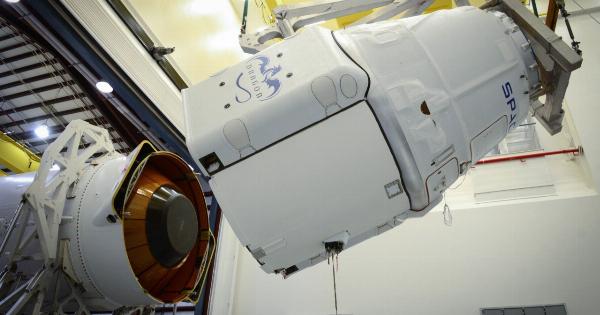Premature infants are highly vulnerable to various health complications, and one such serious condition is late-onset septicemia. Septicemia, commonly known as blood poisoning, is a life-threatening infection that spreads through the bloodstream.
Late-onset septicemia in premature infants refers to the onset of septicemia after the first 72 hours of life. Identifying this condition promptly is crucial for timely treatment and improving the infant’s prognosis.
In this article, we will discuss the signs and symptoms of late-onset septicemia in premature infants, as well as the diagnostic methods and management options available.
1. Clinical Presentation
Late-onset septicemia can manifest with various clinical signs and symptoms, which may vary depending on the severity of the infection and the organs involved. Common clinical presentations include:.
– Fever: Infants with septicemia often present with an elevated body temperature. However, it’s important to note that some infants may have a lower-than-normal body temperature, especially in the case of severe infection.
– Poor Feeding and Lethargy: Premature infants with late-onset septicemia may display a lack of interest in feeds and become unusually sluggish or difficult to wake.
– Respiratory Distress: Septicemia can cause inflammation and fluid accumulation in the lungs, leading to breathing difficulties. Increased respiratory rate, grunting, flaring of nostrils, and retractions are common signs of respiratory distress.
– Abdominal Distension: Infants with septicemia may experience abdominal distension due to inflammation and gas accumulation in the intestines.
2. Laboratory Findings
Laboratory investigations play a crucial role in diagnosing late-onset septicemia in premature infants. The following laboratory findings may suggest the presence of septicemia:.
– Complete Blood Count (CBC): An elevated white blood cell (WBC) count with immature forms (bands) is often observed in septicemia. Thrombocytopenia (low platelet count) and anemia may also be present.
– Blood Culture: Obtaining blood cultures from the infant is essential for definitive diagnosis. Positive blood cultures confirm the presence of bacteria in the bloodstream, indicating septicemia.
The blood culture also helps identify the specific pathogen responsible for the infection, enabling targeted antibiotic therapy.
– Inflammatory Markers: Measuring inflammatory markers such as C-reactive protein (CRP) and procalcitonin levels can provide additional evidence of infection.
Elevated levels of these markers suggest the presence of septicemia, particularly if combined with other clinical symptoms.
3. Imaging Studies
In some cases, imaging studies may be helpful in the diagnosis of late-onset septicemia, especially if the infection has spread to other organs. The following imaging modalities are commonly used:.
– Chest X-ray: A chest X-ray can help assess the presence of respiratory complications associated with septicemia, such as pneumonia or lung inflammation.
– Abdominal Ultrasound: An abdominal ultrasound may be performed to evaluate the presence of any fluid accumulation or other abnormalities in the abdominal cavity.
– Brain Imaging: Premature infants with late-onset septicemia may be susceptible to the development of meningitis or brain abscesses.
Imaging studies such as cranial ultrasound or magnetic resonance imaging (MRI) can aid in the diagnosis of these complications.
4. Differential Diagnosis
Several conditions may mimic the clinical presentation of late-onset septicemia in premature infants. It is important to consider the following differential diagnoses:.
– Necrotizing Enterocolitis: Necrotizing enterocolitis (NEC) is a gastrointestinal condition common in premature infants. It can mimic the symptoms of late-onset septicemia, including abdominal distension and feeding intolerance.
Distinguishing between NEC and septicemia may require a combination of clinical evaluation, laboratory findings, and imaging studies.
– Respiratory Distress Syndrome: Premature infants are susceptible to respiratory distress syndrome (RDS), a condition characterized by insufficient production of surfactant, leading to breathing difficulties.
The respiratory distress seen in septicemia can resemble RDS, necessitating a thorough evaluation to differentiate between the two.
5. Management
Timely intervention is crucial in the management of late-onset septicemia in premature infants. The primary goal of treatment is to eliminate the infection and stabilize the infant’s condition. The following measures are essential:.
– Antibiotic Therapy: Prompt initiation of broad-spectrum antibiotics is crucial while awaiting blood culture results. Once the pathogen is identified, antibiotic therapy can be adjusted accordingly.
The choice of empirical antibiotics should consider the prevailing local patterns of bacterial resistance.
– Supportive Care: Premature infants with late-onset septicemia often require intensive supportive care.
This may include respiratory support with supplemental oxygen or mechanical ventilation, intravenous fluids to maintain hydration, and nutritional support to meet the infant’s energy needs.
– Surgical Intervention: In some cases, surgical intervention may be necessary. Drainage of abscesses or removal of infected tissues may be required to control the spread of infection and prevent complications.
Conclusion
Late-onset septicemia in premature infants is a serious condition that requires prompt recognition and intervention.
The clinical manifestations, laboratory findings, and imaging studies discussed in this article can aid in the identification and diagnosis of septicemia. Early initiation of appropriate antibiotic therapy, along with supportive care and surgical intervention when necessary, can improve outcomes for these vulnerable infants.































